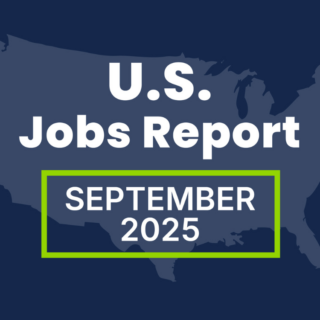Developing a compelling employer value proposition (EVP) has become the cornerstone of successful talent acquisition strategies. Organizations that master their employer value proposition framework consistently outperform competitors in attracting, engaging, and retaining top-tier talent. This comprehensive guide explores how to build an employer value proposition strategy that resonates with candidates and drives measurable recruitment success.
What is an Employer Value Proposition?
The employee value proposition, or EVP, is a clear articulation of why your target talent should work for your company over competitors. It captures the essence of your uniqueness as an employer, the “give and get” between you and your employees.
Once defined, this proposition is a powerful tool and the foundation of any employer brand management strategy. We think of the EVP as a guiding “north star” for all employer brand activities.

Key Components of an Employer Value Proposition Framework
A well-crafted employer branding value proposition should be:
1. Authentic
Your EVP should reflect the true culture and values of your organization. If it lacks authenticity—if the employee experience doesn’t match up to your promise—you’ll start to suffer from high attrition and credibility issues when those employees share their experiences.
2. Aspirational
Organizations are constantly evolving and striving to grow and achieve their purpose. Your employee value proposition should reflect the vision of the future that your organization imagines for itself and call out the behaviors you are seeking in employees to help you reach that destination.
3. Unique
Let’s not forget that you are in competition for talent. So, it’s critical that your brand narrative stands out and is memorable. Generic statements about excellence or respect don’t tell a candidate why they should join you specifically. It’s important to understand what makes a career at your organization distinctive versus your competition.
4. Compelling
Find the overlap between what you uniquely offer and what motivates talent in their career choices. Aim for strong alignment between their personal values and ambitions and those of your organization.
5. Dynamic
Your current employees are not one homogenous group. They have different roles and responsibilities and come from different backgrounds. As such, your EVP must speak to the diverse group of candidates you want to attract. The messages needed to attract a candidate into a high-volume, entry-level role are very different from those needed to entice a highly specialist senior role. Think about how to nuance your employee value proposition with specific messaging that speaks directly to the concerns and interests of each talent audience.
Understanding the Difference between Employer Brand and Employer Value Proposition
EVP and employer branding serve distinct but complementary functions in your talent strategy:
Employer Brand: Your employer brand encompasses the sum of perceptions and lived experiences of what it’s truly like to work for your organization.
Employer Value Proposition (EVP): Your employer value proposition encapsulates the unique essence of your organization as an employer, outlining the distinct “give and get” between you and your employees. It’s the core promise of working for your company.
Employer Brand Platform: The internal and external creative and communications you develop and distribute based on your employer value proposition. These materials guide the perception of your employer brand in the marketplace.
👉 Get Your Essential Guide to Employer Branding

Why Your Employer Value Proposition Matters More Than Ever
A strong employer value proposition more critical than ever before. Several key factors drive this increased importance:
Emerging Roles and Critical Talent Shortages
The rapid pace of technological advancement and digital transformation has created entirely new job categories while simultaneously creating acute shortages in specialized skill sets. From AI engineers and data scientists to cybersecurity specialists and digital marketing experts, organizations are competing for talent in roles that barely existed a decade ago. These emerging professionals often have multiple opportunities and can be highly selective about their employers.
Additionally, traditional roles are evolving to require new competencies, creating talent gaps even in established fields. Organizations with weak or unclear employer value propositions find themselves unable to attract these high-demand professionals who prioritize purpose, growth opportunities and alignment with their career aspirations.
Multi-Generational Workforce Dynamics
Today’s workplace spans multiple generations, each with distinct expectations and motivations. Gen Z candidates prioritize social impact and mental health support, while Millennials seek career advancement and work-life integration. Generation X values stability and recognition, while Baby Boomers appreciate respect and flexibility. Your employer value proposition must speak to these diverse priorities simultaneously.
Digital-First Candidate Experience
Job seekers research potential employers extensively online before applying. Your employer value proposition must translate effectively across digital channels, from your careers page to social media presence, online reviews, and employer branding content.
Remote and Hybrid Work Revolution
The shift toward remote and hybrid work models has redefined what candidates expect from employers. Your EVP must address location flexibility, digital collaboration tools, home office support and virtual team building initiatives.
Purpose-Driven Career Decisions
Many professionals increasingly seek employers whose missions align with their personal values. Your employer value proposition should clearly articulate your organization’s purpose, social responsibility initiatives, and community impact.
The Problem with Traditional EVP Strategies
Many organizations continue to rely on outdated EVP approaches that fail to resonate with modern candidates. Traditionally, an employer value proposition strategy can suffer from several critical limitations:
Static, One-Size-Fits-All Messaging
Historically, employer value propositions were developed as static documents, created at a single point in time with a “set it and forget it” mentality. This approach has left many organizations with EVPs that haven’t kept pace with rapid technological advancements, evolving workplace expectations, and changing candidate behaviors.
Limited Stakeholder Input
Traditional employer value proposition development often relied solely on executive perspectives, neglecting invaluable insights from employees throughout the organization. This top-down approach frequently resulted in EVPs that didn’t accurately reflect the authentic employee experience.
Generic, Broad-Appeal Messaging
Conventionally formulated employer value propositions tend to be generalized, aiming to appeal to the broadest possible audience. The unintended consequence is often messaging that feels generic and meaningless to candidates seeking authentic, specific value propositions that address their unique motivations and career aspirations.
Lack of Differentiation
Many EVPs rely on similar language and benefits, failing to differentiate the organization from competitors. Phrases like “competitive salary,” “great benefits,” and “collaborative culture” appear in countless EVPs without providing specific, compelling reasons for candidates to choose one employer over another.
Insufficient Integration Across Touchpoints
Traditional EVP strategies often exist in isolation, failing to integrate seamlessly across all candidate and employee touchpoints. This disconnect between the employer value proposition and actual candidate experience creates credibility gaps that undermine recruitment efforts.

How to Develop your Employer Value Proposition
Developing a compelling employer value proposition requires a systematic, research-driven approach that authentically reflects your organization’s unique strengths while addressing candidate motivations. Here’s a comprehensive framework for creating an effective EVP:
Step 1: Conduct Comprehensive Research and Analysis
- Benchmark Your Employer Brand: Use the Outthink Index to see how your current employer brand stacks up against other organizations in your industry. The Outthink Index is an interactive tool that lets you compare your employer brand across critical touchpoints—from social presence to candidate experience and employee engagement. It’s the perfect starting point for understanding your employer brand. Contact us to receive your custom Outthink Index report.
- Employee Listening Sessions: Engage current employees across all levels and departments to understand what they value most about working for your organization. Use surveys, focus groups, and one-on-one interviews to gather authentic insights about the employee experience.
- Exit Interview Analysis: Review exit interview data to identify common themes about why employees leave and what could have retained them. This information helps identify gaps in your current employer value proposition.
- Candidate Feedback Assessment: Analyze feedback from recent candidates, including those who accepted offers and those who declined. Understanding why candidates choose or reject your organization provides valuable EVP insights.
- Competitive Intelligence: Research competitor employer value propositions and employer branding strategies to identify opportunities for differentiation. Analyze job postings, careers pages, and employee testimonials to understand the competitive landscape.
- Market Research: Stay informed about broader talent market trends, candidate expectations, and industry-specific considerations that should influence your employer value proposition strategy.
Step 2: Define Your Unique Value Drivers
Based on your research, identify the specific benefits, experiences and opportunities that differentiate your organization. Your EVP should highlight authentic strengths rather than aspirational goals that don’t reflect current reality.
- Tangible Benefits: Document concrete offerings like compensation packages, benefits programs, professional development opportunities, and workplace amenities that set your organization apart.
- Intangible Experiences: Identify cultural elements, work environment characteristics, leadership styles, and team dynamics that create unique value for employees.
- Growth and Development: Articulate specific career advancement opportunities, skill-building programs, mentorship initiatives, and learning resources available to employees.
- Purpose and Impact: Define how employees contribute to organizational success and broader societal impact through their work.
Step 3: Segment Your Audience
Different candidate segments value different aspects of the employee experience. Develop targeted employer value proposition messaging for key talent segments:
- Role-Based Segmentation: Tailor your EVP messaging for different functions (engineering, sales, marketing, operations, etc.) based on role-specific motivations and career paths. Develop specialized EVP components for high-demand skill sets or hard-to-fill positions where specific value propositions may be necessary.
- Experience Level Segmentation: Create EVP variations for early careers talent, mid-career professionals and recruiting senior executives, addressing the unique priorities of each group.
- Demographic & Geographic Segmentation: Consider generational differences, geographic preferences and diversity considerations when crafting your employer value proposition messaging.
Step 4: Craft Compelling, Authentic Messaging
Transform your research insights into clear, compelling employer value proposition statements that resonate with target candidates:
- Lead with Your Strongest Differentiators: Prioritize the most unique and valuable aspects of your employee experience in your core EVP messaging.
- Use Specific, Concrete Language: Replace generic terms with specific examples and measurable benefits that candidates can easily understand and evaluate.
- Include Employee Voices: Incorporate authentic employee testimonials and quotes that bring your employer value proposition to life through real experiences.
- Balance Current Reality with Future Vision: Ensure your EVP accurately reflects the current employee experience while also communicating your organization’s commitment to continuous improvement and growth.
Employer Value Proposition Examples and Best Practices
Learning from successful employer value proposition examples can help illustrate how leading organizations differentiate themselves in competitive talent markets. Here are some EVP examples of how PeopleScout has helped our clients.
Case Study: Wates Construction’s Diversity-Focused Employer Brand
UK construction company Wates faced the challenge of recruiting 81 trainees across 21 roles while overcoming the construction industry’s traditional image and attracting diverse talent to a male-dominated field. Despite their 125-year legacy, limited brand awareness hindered their ability to stand out in a crowded market.
By developing personas through extensive research, we helped Wates create a compelling employer value proposition centered on, “Creating tomorrow together.” Their EVP emphasized individual impact on company legacy, work-life balance and inclusivity. They supported this messaging with bold, vibrant visuals that contrasted with typical industry imagery and redesigned their assessment process for accessibility.
Results: The new employer brand platform generated 7,918 applications with 30% from women. We assessed 343 candidates, resulting in one-third of offers going to women, a big win given that women are underrepresented in the industry.

Case Study: Retailer’s Tech Talent EVP Transformation
A leading grocery retailer faced a significant challenge: while transitioning to become a tech-forward organization with 50% of new hires in digital roles, their employer brand was still perceived as purely retail-focused. Tech professionals couldn’t see past the shop floor to recognize the complex technical challenges available.
Through research with both internal tech teams and external digital professionals, they discovered that tech talent prioritized projects that involved tackling challenging problems, collaborative cultures, flexible work environments and tangible impact. The retailer redesigned their employer value proposition around these insights, positioning themselves as “the perfect blend of nimble start-up with big business backing.”
Results: A 39% increase in LinkedIn engagement, 17,000+ tech professionals joined their LinkedIn community, and 66% increase in visits to their tech careers page over three years.
Case Study: Global Beverage Manufacturer’s APAC EVP Localization
A global beverage manufacturer needed to localize their employer value proposition across diverse Asian markets including China, Japan, South Korea, India, and Vietnam. They faced unique challenges:
- Emerging talent viewed the company as short-term employment
- Consumer goods weren’t seen as prestigious careers
- Cultural sensitivities around alcoholic beverages created additional barriers
Through comprehensive research including competitive analysis, employee focus groups and cultural consultations, PeopleScout developed a flexible EVP framework that could be customized for each market while maintaining core brand consistency. The solution leveraged their well-known consumer brands to build employer brand recognition and addressed local cultural nuances.
Results: A validated EVP framework for each Asian market, localized recruitment marketing toolkits, and targeted messaging successfully repositioned the company as a long-term career destination for emerging talent.
Your Employer Value Proposition as a Strategic Advantage
A well-crafted employer value proposition serves as your organization’s most powerful recruitment and retention tool. Organizations that invest in developing authentic, compelling and differentiated EVPs consistently outperform competitors in attracting top talent, reducing turnover and building strong employer brands.
The key to EVP lies in balancing authenticity with aspiration, ensuring your employer value proposition accurately reflects current employee experiences while communicating your organization’s commitment to continuous improvement and growth. By following the EVP framework outlined in this article, you can develop an employer value proposition that not only attracts exceptional talent but also supports long-term organizational success.




